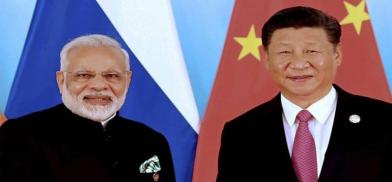India needs to reduce its growing economic dependence on China
Only when India is strong enough to promote a new paradigm based on internationally acceptable and verifiable norms can the boundary questions raised by China be settled

Confrontation, cooperation and competition are the three watchwords in former Indian Army Chief, Gen Shankar Roy Chowdhury's advice about how India can progress in its relationship with the People’s Republic of China. In foreign and economic policy, the country with which India has the most complex and nuanced ties is China. Gen Roychoudhury’s think tank in Kolkata, the Centre for Eastern & Northeastern Regional Studies, or CENERS-K (ceners-k.com), has been focusing on India-PR China relations at its annual Calcutta Dialogue.
According to its prescription, in bilateral ties cooperation must be fostered and competition sustained while confrontation can be used to avoid conflict. With PR China, the conflict stems not only from our colonial past when British-led Indian soldiers invaded China to preserve their interests, as well as colonial India’s support of the Kuomintang (KMT) until 1947 but also the problem of international borders that was hardly an issue in pre-colonial times. PR China raised objections to the McMahon Line for the first time only on 23 January 1959. The defeat of ill-equipped and inadequate Indian forces in October 1962 by China led to the creation of the ceasefire line, or Line of Actual Control (LAC), which deviates at places from the McMahon Line.
The two countries reached agreements and standard operating procedures (SOPs) to maintain peace and tranquility on the LAC but China unilaterally began pushing inwards in eastern Ladakh in April 2020 and has not yet restored the status quo ante despite over a dozen rounds of military and diplomatic talks and agreements to disengage and de-escalate.
Acceding to the Chinese proposal to put the boundary question on the back burner while progressing on all other areas is possible only when China pulls back is deployments and retreats in all sectors behind the April 2020 lines and abides fully by agreements to maintain peace and tranquility on the border. Otherwise, it will only enable them to continue pushing inwards at their convenience and tie down our military and border security forces permanently along its entire length.
Show of strength
Since the Chinese accept rulings of international courts only when it suits them, India must develop its capability of exerting adequate international pressure to prevent escalation by the Chinese. Sustained diplomacy backed by firm military confrontation and show of strength will help restore the disturbed peace and tranquility on the LAC. India must continue to build up its economic strength and improve its military prowess and depth.
Many areas are available for cooperation with China, as India can learn much from the development trajectory of our largest neighbor. These are included in the 10 Pillars of cooperation that both countries have agreed to pursue. India and China have been knowledge partners for millennia.
However, India now needs to create the ambience and ecosystem necessary for the absorption and productive utilization of the over 20000 Indian students now seeking tertiary educational and professional qualifications in China. It must be made easier to establish the equivalence of each other’s tertiary educational and professional qualifications.
In STEM education, research, invention and incubation, advanced computing technology and engineering, healthcare and other fields India has much to learn from China. India also needs their skills in design and manufacture, particularly of capital goods and machinery.
Most of all, the Indian industry can profit from the training, discipline, efficiency and productivity augmentation systems applied to the Chinese labor force and to achieve their responsiveness to customer demands that enable the production of everything from Ganesha idols to aircraft carriers within agreed cost and schedule parameters.
Differences in business mindsets
Indians are loathe to change their established practices, regardless of customer requirements, and will most often try to tell the customer that what he wants cannot be done. The Chinese, on the other hand, have learned to produce precisely what the customer demands, thereby gaining market share worldwide and commensurate wealth.
Although China gained independence two years after India, it pulled far ahead of India since 1978 and its economic output now is over five times greater than ours. In the process, it has reduced widespread hunger and poverty, educated its millions and modernized its infrastructure to provide basic municipal services widely. It has also used its growing wealth and technical capability to spread its influence worldwide and secure its supply sources and chains to maintain and grow its economy.
India must proactively manage its economic, trade and financial relationships with China to facilitate its own growth path and upward trajectory without creating unsustainable indebtedness. India must also find grounds to cooperate with China on Global Commons issues as well as regional structures. It must use platforms like RIC, BRICS, SCO and AIIB more proactively and effectively to convey its civilizational message as well as contribute to development.
To compete effectively with China around the world, India needs to be far more proactive, invest more in providing skills training, tertiary education and research opportunities to students of the BBIN countries, engage more intensively with our target areas of influence, particularly in the global South, and penetrate far more deeply into their economies to become an indispensable part of their development trajectories.
Above all, India must deliver on its promises. Clear-eyed and determined realpolitik is the only effective way forward. If we decide to be a major trading and services provider to the world we must create matchless ecosystems for India to invent and innovate to compete for the world’s wealth with China.
Collective thought and action
Our leadership must focus on collective thought and action for the good of the nation, by rising above policies that cater to local or short-term interests, and planning to play the long game by setting objectives for the next fifty years or more.
Our entrepreneurs have in the last year increased our trade deficit with China to over USD 47 billion. India’s global exports have risen by less than 22 percent but her imports have grown by over 70 percent. This is unsustainable. India must not only become "atmanirbhar" (self-reliance) in the true sense but also collectively develop the "atmaviswaas" (self-belief) to stand up and be counted in the world community.
India must use and enhance its enormous soft power resources and capability, respecting the culture and values of its partners and encouraging the most open and free flow of ideas and solutions to common problems and issues.
India has the advantage in soft power, of being supportive rather than exploitative with her partners. India must continue with this stance to help its friends and partners grow in prosperity and stature. Above all, as former NSA & Foreign Secretary Shivshankar Menon stated in the recently concluded annual India Today Conclave, India must grow by at least 12 percent per annum for the rest of our lifetimes to leave our next generation in a better place.
Recommendations
China studies must become far more prevalent and broad-based in our universities and cover far more issues and topics about their evolution over the last century. High proficiency in Chinese languages must be encouraged to reduce our current extreme dependence upon English-language sources. This will enable us to better formulate and nuance our strategy and tactics to deal with our greatest “frenemy”.
Our growing economic dependence on China must be significantly reduced by augmenting and upgrading our own national output and diversifying widely our sources of supply and partners in trade.
We must rapidly develop the infrastructure and economy of the border areas, particularly in the Northeast, so that the youth there become optimistic about their future prosperity and do not feel alienated from the Indian mainstream.
Only when India is strong enough to promote a new paradigm based on internationally acceptable and verifiable norms, rather than questionable historical claims or hearsay, can the boundary questions raised by China be settled. This will reduce the growing hostility of our neighbors and the possibility of armed conflict simultaneously on two fronts, bring down cross-border terrorism, and bring back the cooperation and friendship between our two civilizations that have thrived for millennia.
Only prosperity and peaceful co-existence can take the two largest populations of the world more rapidly and further on the path to progress.
(The writer is a former Indian ambassador. The views expressed are personal. He can be reached at sarva.chakravarti@yahoo.co.uk)










Post a Comment